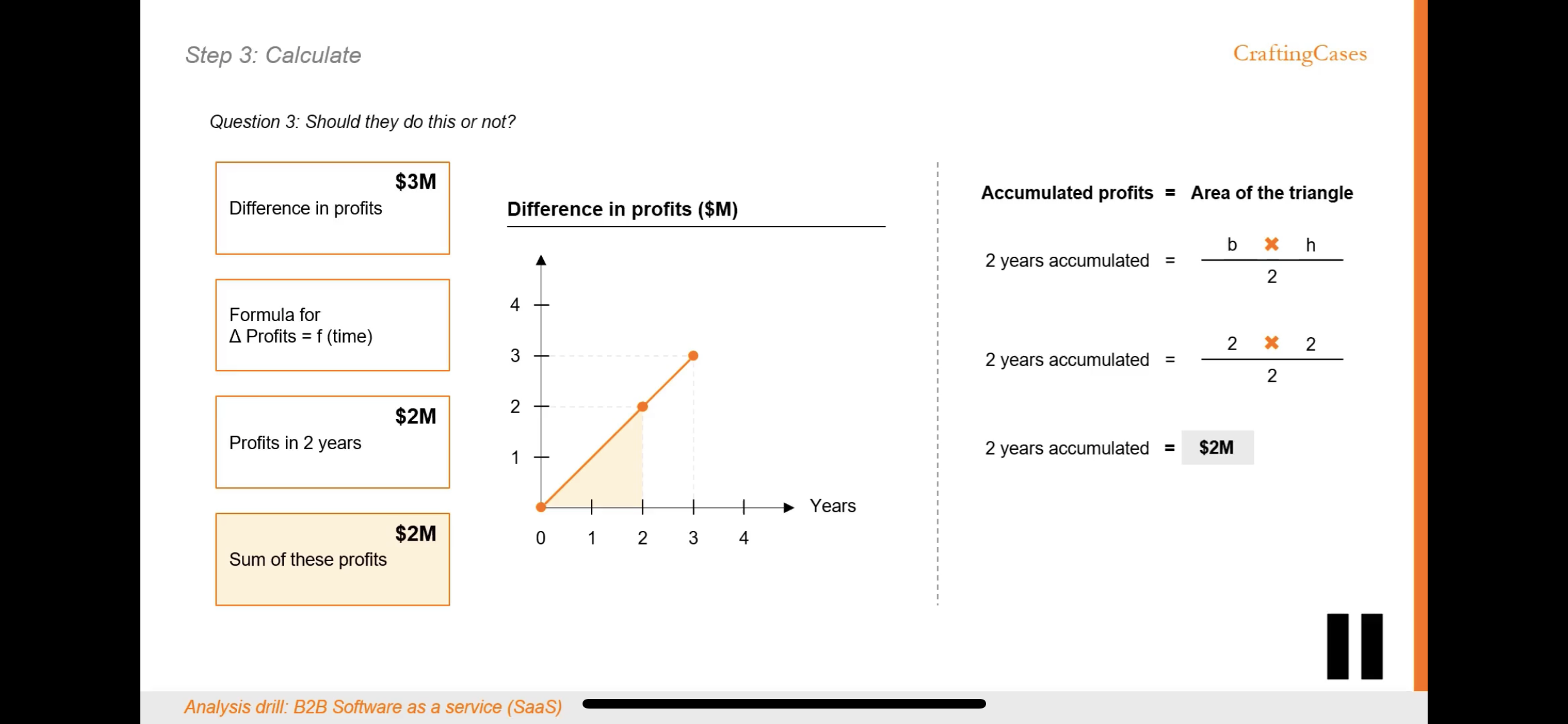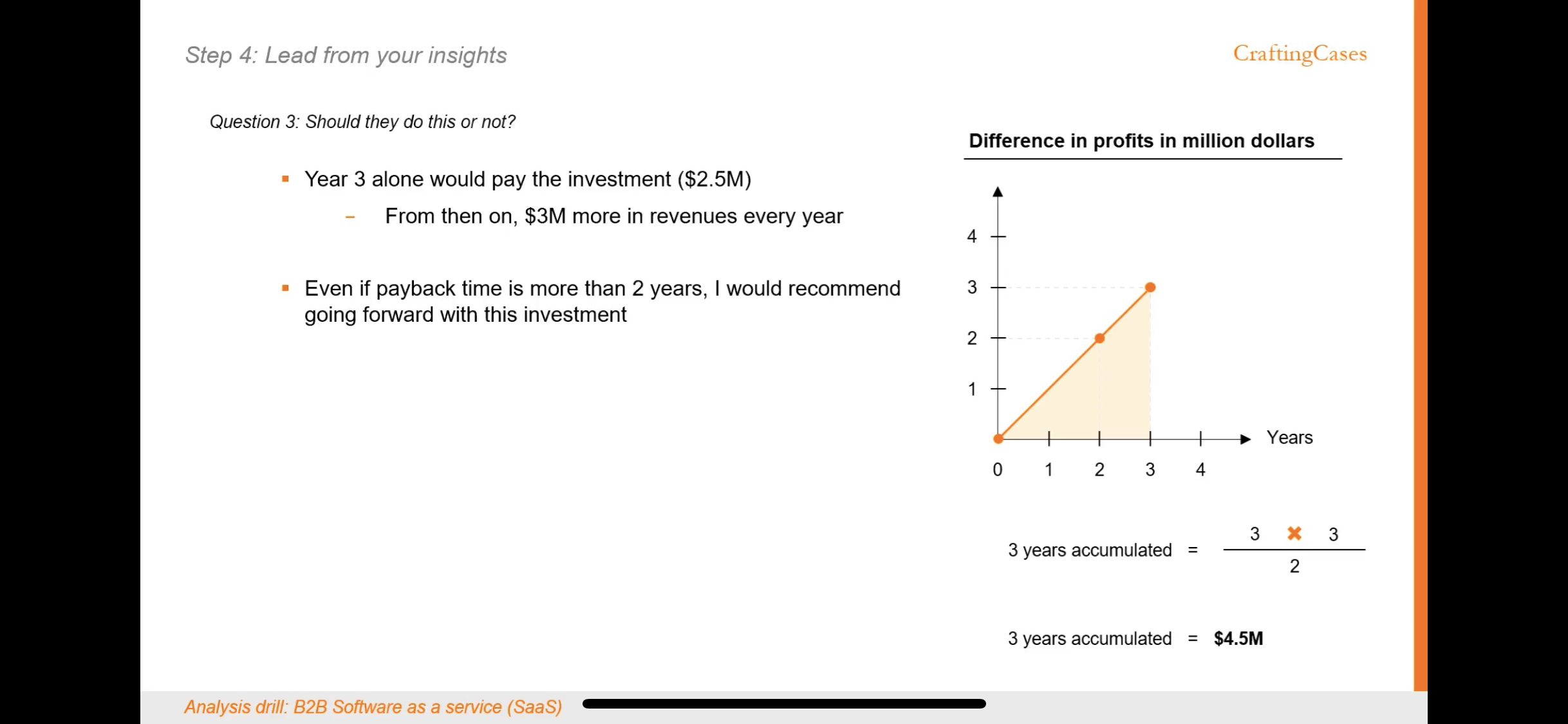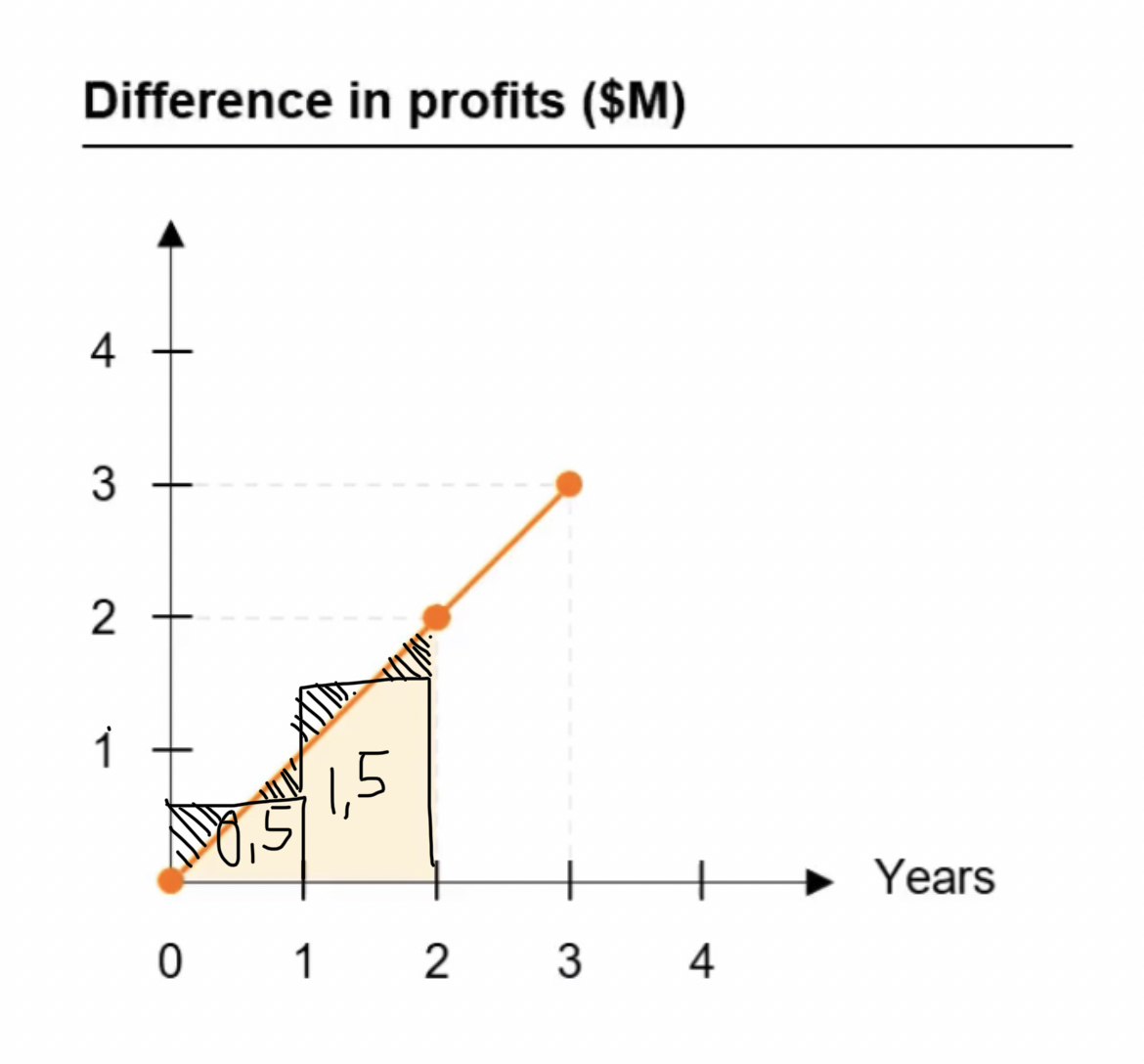Hello guys,
I‘ve recently begun my case preparation, and have been using craftingcases as a starting point. Right now, I am struggling with understanding the concept of “accumulated profits“ in the context of this graph given.
For context: The graph plots the increase in profits for successive years, so profits increase at an increasing rate for this company, and we need to know if the investment worth 2 M is worth it, considering the client wants his money back in 2 years max.
• What I understood: plotting the difference in profits for Y1 and Y2 based on difference we have calculated for Y3
• What I did not understand: when we can already see that for Y2, increase in profits from year 1 is 2M, which is equal to the value of our investment; why are we calculating the area under the line graph?
What is the significance? While I understand what this means conceptually, such as calculating the distance in speed-time graph or work done in Force-time graphs, I don’t know what accumulated profits actually mean in this context.
I am at loss of words, I‘ve been trying to understand this for over 8 hours now and I feel dumb.














In this question, the client implements a new software to increase customers subscribing to their services, and it was profitable earlier too. Client would expect the increase in profits from when the software was not there, to determine worth of the investment.
If I understand correctly, the value over accumulated profits (1-0.5, or 2-1.5) represents base level of profits (from the customers who subscribed to the client when software was not implemented) , and not growth, which gives us overall differences of 1, 2 and 3 M. Am I correct?
The graph does not plot the profits per year, but increase in the profits per year.
Could you elaborate a simple example that helps me understand this? I believe there’s a severe gap or concept that I am entirely missing out on. Been tearing my hair over this ?
Is that what you meant?